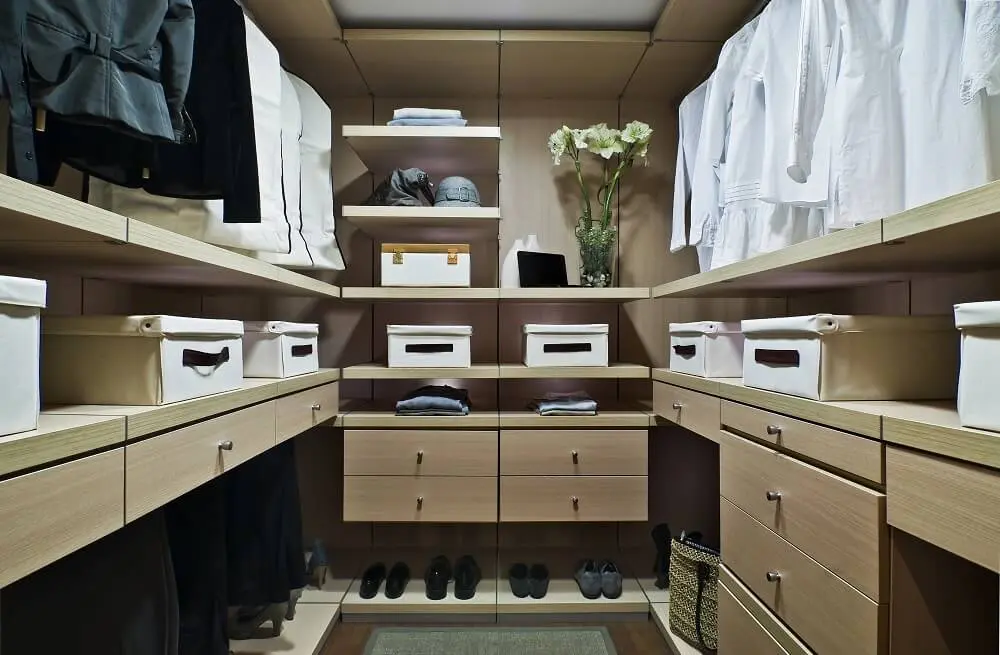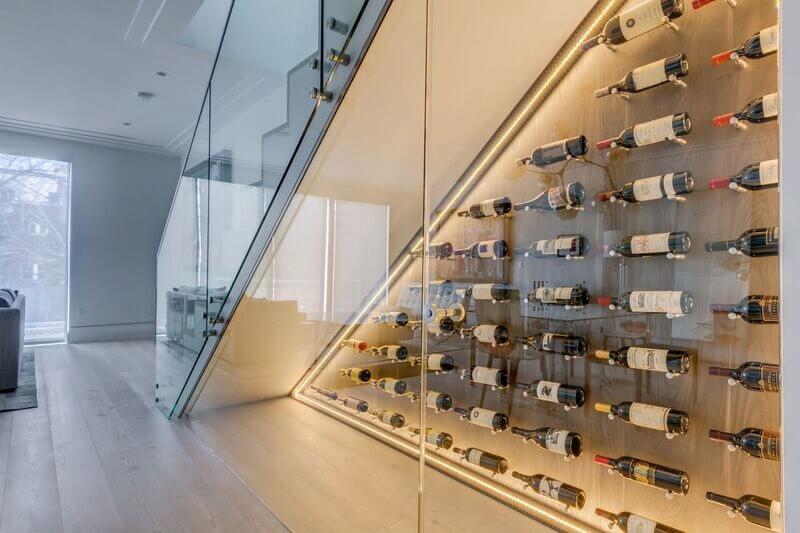
Whether it’s the Marie Kondo craze storming the country, a desire for a clutter-free home like the ones on HGTV or just Americans acknowledging they have too much stuff, home organization is in. The top 10 most desirable features for home buyers today include home-storage solutions, such as garage storage and walk-in pantries, according to a recent survey by the National Association of Home Builders.
“Whether you’re a millennial in your first small home, you’re aging in place and need to streamline your belongings or you’re a member of the sandwich generation with no time to be disorganized, you need storage,” says Lita Dirks, owner of Lita Dirks & Co., a model home merchandising company in Greenwood Village, Colorado.
Builders are responding by incorporating more storage options into new home designs, and at the 2019 NAHB International Builders’ Show in January, organizational experts were on hand to present dozens of storage ideas and techniques. Here are 12 tips we picked up at IBS that you can use to create more storage in your new home:
To encourage a calm, Zen-like reentry into your home each day, consider personalized storage for items you use often and for those that make you feel happy to be home. For some people, Dirks says, that means a rack on the wall for your bicycle, while for others a customized closet with space for a stroller or your gym bag makes more sense. Visible storage can include a wall of pegs for wine bottles that don’t fit in your kitchen or dining area.
2. Extend your usable space into your garage.
Your garage can become living space if you upgrade the flooring and create an overflow kitchen space with counters, cabinets and a refrigerator, says Michaelle Bradford, editor of Closets & Organized Storage magazine in Chicago. You can even convert a corner to a hobby space or home office, especially if your garage has a window.
3. Go vertical.
Adding a third rod to your closet for out-of-season clothing puts those items near the ceiling, says Theresa Finnigin, a storage and organization expert at Organized Living in Cincinnati. Manufacturers are making these rods with hooks to make it easier to pull them down when needed.
4. Take advantage of space under your stairs.
Whether you have space under the stairs leading to your upper level or from your basement to the main level, the uses for that space are limited only by the depth and height of your stairs. For stairs near your front door, you can hide storage behind decorative doors or create open storage for displaying art or photos. On the lower level, storage drawers can be built under the stairs to accommodate home office paperwork or to store art supplies, toys and games, Bradford says.

5. Add drawers to your closets.
When you eliminate bulky dressers from your bedroom, that space immediately feels more serene, Finnigin says. Your closet feels more like a dressing room when it has closed drawers in addition to shelves and closet rods. The drawers can be built in or freestanding.
6. Flexible furniture and sliding panels can maximize space.
Consider built-in panels that slide open to reveal a TV, cabinets or open shelves, and close for a sleek look, Dirks says. The built-ins can hide games, electronics and extra pillows. A similar budget-friendly solution is an ottoman to store toys, blankets and pillows.
7. Expand your garage.
Automated lifts can be installed in your garage for overhead storage to free up floor and wall space, says Bradford. You can store luggage, bikes, sports equipment and more in storage bins that can then be accessed with the push of a button.
8. Create a two-pantry kitchen.
A “Costco” pantry for storage can be paired with a pantry that includes a counter for food prep, Dirks says. The second pantry can function as your “messy kitchen” space that keeps the main kitchen cleaner and less cluttered when entertaining. That second space can also be used for items you use more often. Pullout shelving increases the functionality of a pantry.
9. Maximize your bathroom storage.
For a cleaner look in your bathroom, Bradford recommends an abundance of hidden storage for everything from soaps to cleaning supplies to your jewelry. If you have space, a linen closet in at least the master bathroom, if not every bathroom, makes it easier to keep towels and other items organized.
10. Hobby space.
A traditional butler’s pantry or wet bar can be customized to hold a home brewing station or a wine and beer refrigerator for foodies, Dirks says. Alternatively, this nook can be just the right size to store items for a hobby such as yarn and knitting supplies or even a gift-wrapping station. A space designated as a bar or butler’s pantry typically has a flat surface as well as cabinets and open shelving that can function for almost any hobby or even as a small home office.
11. Designate space for pet supplies.
With 68 percent of U.S. households owning a pet, according to an American Pet Products Association survey, creating storage for pet supplies and toys is becoming more prevalent. Bradford recommends adding cubbies to the family entrance for pet food, leashes and more. Pullout drawers can be incorporated into the kitchen or family entrance for water and food dishes to keep them off the floor.
12. Maximize the value of a window seat.
While tossing some blankets and pillows into the well of a window seat is common, Dirks suggests putting that space to work as a filing cabinet or for storing holiday decorations, wrapping paper or pet toys.
While some of these items can be costly to add, such as the automated lifts for overhead storage, you can inexpensively install drawers or extra rods to your closets. And if you’re building your home, talk to your builder about what storage options you need and how you can incorporate them. It just takes some imagination and organizational skill to maximize every inch of your home for a clutter-free lifestyle.

Michele Lerner is an award-winning freelance writer, editor and author who has been writing about real estate, personal finance and business topics for more than two decades.
 Trending: New Condos of All Sizes
Trending: New Condos of All Sizes